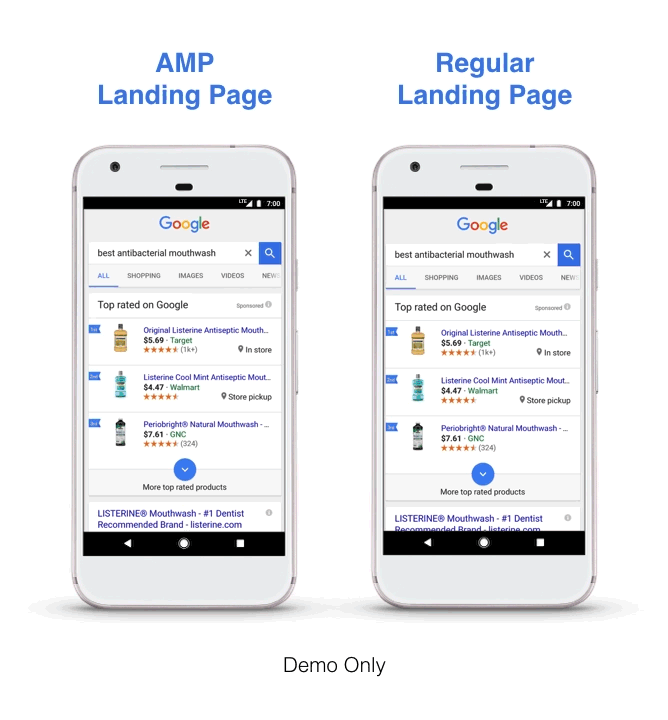So, how do you obtain the devoured lightning mark distinguishing AMPs in search results?
Apart from the three components that AMPs are made of, you need to sort out the HTML tag of your page. This means making sure that a standard page that has an AMP equivalent needs to point right to it, and has to have a canonical tag.
Once you have a ready, properly made AMP, there is still one thing to do. It needs to be verified and activated by Google. This can be done using Google’s webmaster tools. Once it’s ready, your website will obtain a grey check mark with white lightning in it. It will also load instantly for any user of any web browser.
According to Google, there are already 1.5 billion AMPs published. Among other initiative participants, there are:
- E-commerce sites, like eBay and AliExpress
- Publishing platforms, such as WordPress and Medium
- Social platforms, like Twitter, LinkedIn or Reddit,not to mention millions of small to big enterprises
There are no evident downsides of Accelerated Mobile Pages. The issue that raises the most questions is the one of monetizing an accelerated page.
Since there are some restrictions, and ads tend to load slower than a page itself, not all advertising formats are supported in AMP.
However, you can still choose between a handful of solutions. The available formats are display ads (inline and sticky), non-resizable rich media, native ads, text ads, HTML 5 ads, and in some cases also video ads.
Interestingly enough, a special AMPHTML ad format has been invented to broaden the spectrum of possibilities. AMPHTML is a special light-weight, a fast-loading ad that actually doesn’t look any different from a regular ad.
Summing up, there are no clear downsides of Accelerated Mobile Pages.
There are clear benefits, though.
With page loading times barely even being a thing, minimal data consumption, and a clear connection between speed and conversion, AMPs have become the next step in mobile browsing.
We have adapted the responsive web design, and it has made a big difference in the comfort of mobile browsing. Accelerated Mobile Pages may not be as revolutionary, but they are certainly making the mobile browsing experience significantly better, which is beneficial both for the users and the website owners.
Delays can be costly for a business. So don’t wait any longer and get your company an Accelerated Mobile Page.



